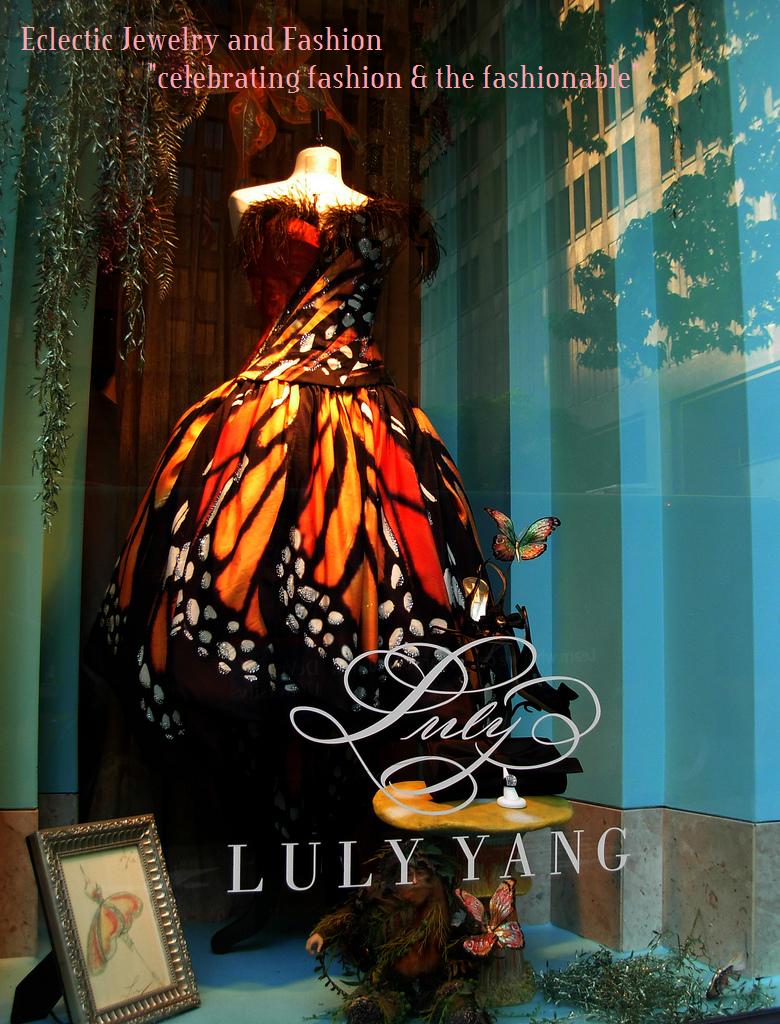 Halston in 1983
Halston in 1983
Looks from Halston III for JCPenney

Looks from Halston III for JCPenney: a marabou jacket (about $150) and an ostrich-trimmed velvet jacket ($110) and skirt ($70).
"Who needs cashmere?"
So said the legendary Halston on June 7, 1983, as he made his way through the racks of pieces he had designed for Halston III, his lower-price line for J.C. Penney. Looking back, the pact made Halston a pioneer in the world of high-low fashion, but it was ruinous for him personally. At the time, though, he sounded quite optimistic.
Though his dresses had appeared on Studio 54 regulars such as Liza Minnelli and Bianca Jagger, Halston now had his eye on the Everywoman. “When I think of these clothes, I think of my family,” the Iowa-born designer said. “I have a sister in Little Rock [Ark.] and a sister-in-law in Gainesville, Fla., and they’re dying for these clothes to come out.”
Prices ranged from $24 for a casual shirt to $200 for a coat, and included splashy items such as an ostrich-trimmed velvet jacket. In keeping with the venture’s populist spirit, Halston made appearances on “Phil Donahue” and “Good Morning America.” White- and chrome-fixtured Halston departments were built in the individual stores to house the line. “The idea is to display the merchandise to its best advantage, without things like Dynel wigs taking away from them,” the designer quipped.
But would selling at J.C. Penney hurt his cred with the Beautiful People? “I haven’t had that much flack from the stores,” Halston insisted. “I have a big public, which has been conditioned to buy my things for the past 30 years.”
In a separate story that day, several top retailers shared their reaction to Halston III. According to Bloomingdale’s Kal Ruttenstein, the line “is so much lower-priced [that it] will not hit the same customer.” Phillip Miller, then president of Neiman Marcus, agreed: “I don’t think this will have any adverse effect on Halston’s top line.…It’s a totally different market.”
In fact, the effect was disastrous. Bergdorf Goodman dropped Halston’s main line immediately, and a year later, he would lose the rights to his company and name. Still, in his vision of high-end design for the mass market, Halston anticipated the trend that Target, Kohl’s and other big-box retailers would mine two decades later.
(WWD)
As a lover of ANYTHING Halston, this article kind of saddens me a bit. I'm fully aware that many designers have their ups and downs when trying to market their "particular brand" to certain segments of the population, but that was such a different time in the world of fashion. My personal feeling is that, it had less to do with his design aesthetic and more to do with the fact that the high-end stores such as Bergdorf and Neiman's want exclusivity from their designers.
I'm quite sure the "rankling point" was the fact that, while Halston wanted to reach that "everywoman," the high-end stores obviously wanted to disassociate themselves with his brand, as their target market is always the "monied set." The thought, I'm sure, was that if the "average" woman could purchase Halston, it would no longer prove appealing to that particular group.
While some of that feeling still exists today,(a few years back, I read an article about Bally, and the fact they really prefer, that only a certain segment of consumers wear their designs, so as not to "sully" the Bally name. So there again, they fall into that category of high-end brands, that would never entertain the thought of partnering with Target or anyone of the kind; that's fine, as that's their absolute right, it's just some information that I find interesting). Today's designers do possess much more levity in how their collections will be distributed, which is evident by those who continue to partner with Target. Reputations certainly aren't as "fragile" as they were in past years, as the high-end stores will always receive the "best of the best," regardless of any "side ventures" in which a designer might engage.



No comments:
Post a Comment